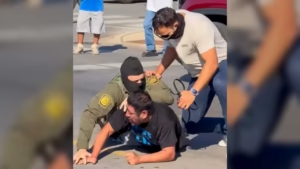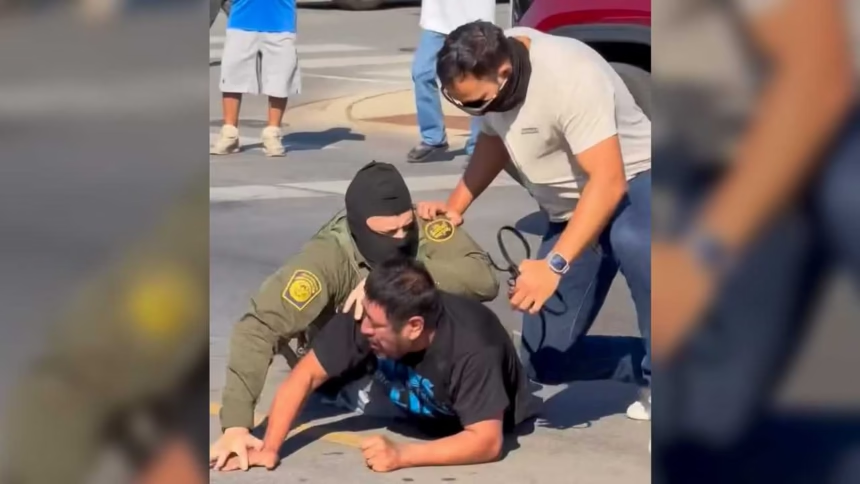Protests have intensified across Chicago since the launch of “Operation Midway Blitz,” a series of enforcement actions aimed at detaining and deporting undocumented individuals. On October 4, in the Brighton Park neighborhood, federal agents faced confrontations with residents and activists following what witnesses described as a woman being shot during an operation; tear gas was deployed to disperse the crowd.
Amidst escalating tension, John Sandweg, former acting director of ICE, warns that current intervention tactics are fundamentally flawed and shift away from proven, targeted enforcement.
In a radio interview, Sandweg expressed alarm regarding the tactics observed in Chicago, encompassing both field operations and encounters with protesters. He explained that, although use-of-force regulations remain technically unchanged, the personnel now deployed are trained for armed confrontations and high-risk scenarios—circumstances that differ substantially from managing civilian demonstrations.
“Dealing with protesters exercising their First Amendment rights is an extremely delicate task that requires extensive training,” Sandweg stated. “That responsibility normally falls to local law enforcement. Yet we’re taking a very confrontational approach.”
When asked to contrast his tenure with current ICE practices, Sandweg identified a shift away from focused, risk-based enforcement toward broad, visible tactics as his main concern and central point of criticism.
“Regarding how ICE functioned, yes, there were obviously record deportation numbers under the Obama administration, but they were very precisely focused on two populations, right? Criminal populations,” he explained.
Sandweg described off-site ICE operations as highly targeted. Before agents went into a city like Chicago, they focused on specific targets based on extensive investigation.
“Today, we’re seeing, for instance, Border Patrol agents marching through downtown Chicago to check people’s identification. That’s the exact opposite of a targeted approach. It’s a showy, public method.”
Controversial Surveillance Technology Use
Turning to another area of concern, national media outlets have recently reported that ICE has invested in facial recognition, iris scanning, and remote phone hacking capabilities. Sandweg confirmed that certain technologies have existed within the security apparatus for years, while acknowledging their contentious nature.
“Some technologies have already been used by the agency. Others, at least when I was at the Department of Homeland Security and ICE, were considered controversial,” he noted.
“We used them, for example, for transnational criminal investigations: these tools could help determine which shipping container to search because it might contain narcotics.”
Sandweg explained that these technologies helped ICE combat child exploitation. He stated that the current administration has reassigned personnel from these investigations to focus on civil immigration enforcement.
He raised concerns that these tools could target citizens who are not committing crimes, but are instead exercising their constitutional right to protest the mass deportation effort.
Agent assaults have been reported. The White House asked technology companies to remove applications tracking federal force movements. Sandweg advocates for a dual approach: protecting personnel and de-escalating confrontations.
“I have tremendous sympathy for the agents, for the women and men of ICE. The vast majority joined to make this country safer. They did so for the right reasons,” he stated.
He believes ICE agents face a very tough situation. They are tasked with mass deportations, which trigger protests. Agents must now also manage these protests, but often lack the necessary training and experience.
He added that agents also become targets of protest. Assaults are real and the agency must protect staff. Tactical choices exist to reduce risk and de-escalate situations, but these are not being used.
“It’s fairly clear that the administration doesn’t seem interested in de-escalation, at present.”
The former official described ICE staff as frustrated and feeling the country is becoming less safe.
“The vast majority of agents, based on my conversations, are extremely frustrated, and there’s an overwhelming sense within the agency that, as a result of all this, the country is somewhat less safe.”
Opposition to Operation Midway Blitz has grown as operations intensified: tear gas deployment against protesters, detention of U.S. citizens, and agents rappelling from helicopters signal a sharp shift in scale and methodology. Community organizations and Sandweg point to these sweeping tactics as a stark departure from prior targeted approaches, underscoring the risks he warns against.
By the newsroom — Based on a radio interview with John Sandweg, former acting ICE director (2013-2014), October 20, 2025. As dissent grows and operations escalate, Sandweg’s warning underscores the urgency for clear, balanced leadership to address Chicago’s turmoil and restore public trust.








